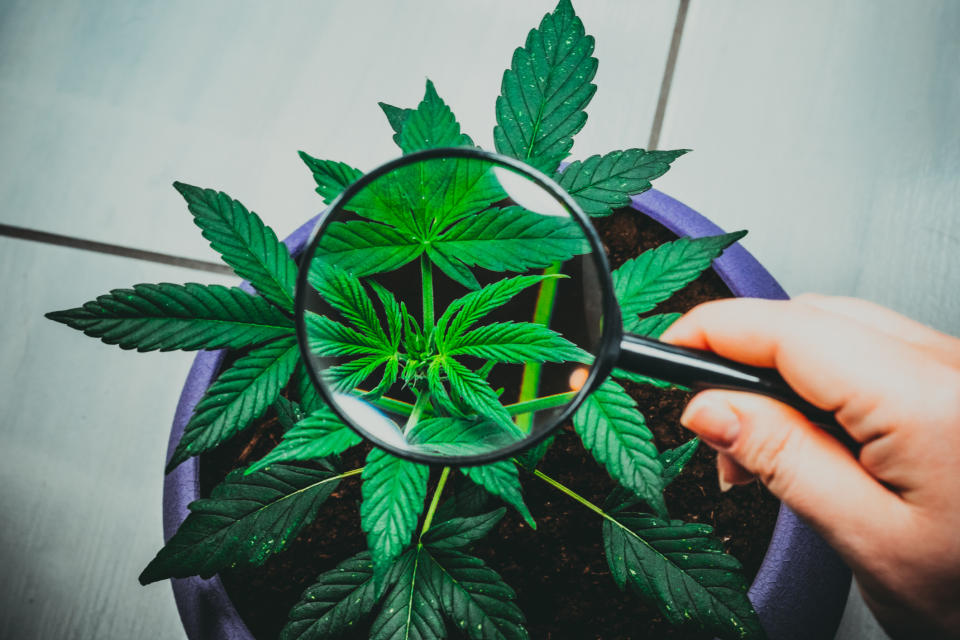The 5 Scariest Numbers in Tilray's First-Quarter Report
Last year was a game-changer for the legal marijuana industry. Following years of hemming and hawing, Canadian regulators passed the Cannabis Act and lifted the veil on nine decades of recreational marijuana prohibition. Couple this legalization with ongoing state-level approvals in the U.S., and Mexico leaning toward adult-use legalization within the next couple of months, and it's easy to see why the North American marijuana market has investors seeing green.
But whereas last year was all about capacity expansion, 2019 is the "show me" year where pot stocks will have to demonstrate to Wall Street that their efforts to grow capacity, build their brand, and expand overseas will translate into higher sales and juicy margins.

Image source: Getty Images.
Tilray's Q1 sales nearly triple from the prior-year period
On Tuesday, May 14, following the closing bell, the sixth-largest marijuana stock by market cap and fourth-biggest grower by market value, Tilray (NASDAQ: TLRY), announced its first-quarter operating results.
For the quarter, Tilray managed to substantially increase net revenue, inclusive of excise taxes paid, to $21.5 million (Tilray is about the only Canadian grower to report in U.S. dollars) from $15.5 million in the sequential fourth quarter and only $7.8 million in the year-ago quarter. The bulk of the sequential quarterly boost came from the now-completed purchase of Manitoba Harvest, which sells hemp foods in more than 16,000 locations in Canada and the United States. Tilray recognized $5.6 million in food product sales during the first quarter. International medical cannabis sales also grew to $1.8 million, a more-than-quadrupling from the year-ago period.
But for as upbeat as CEO Brendan Kennedy is on his company, there was no shortage of worrisome data contained within Tilray's first-quarter report. Here's a glimpse at the five scariest numbers shareholders and marijuana stock investors need to be aware of.

Image source: Getty Images.
1. Gross margin remained anemic at 23%
Perhaps the biggest slap in the face for a second quarter in a row is Tilray's anemic gross margin. After recording a 20% gross margin in the fourth quarter, Tilray's first-quarter margin improved to just 23%, with cost of sales coming in at $17.7 million. Tilray blamed the costs of capacity expansion ramp-up, third-party cannabis purchases, and a $700,000 noncash charge related to Manitoba Harvest's food products inventory for the persistent weakness in gross margin.
What really stands out here is that Tilray, despite being relatively cash-rich and having a brand-name product, at least on the medical side of the equation, hasn't been able to produce enough marijuana from its existing facilities and has, therefore, been buying cannabis from third-party growers to meet its end of supply agreements. That's not a formula for success, and as you'll see a bit later, it's one reason why Tilray is losing money hand over fist.

Image source: Getty Images.
2. Medical marijuana sales growth slowed to a crawl at 5%
Another surprise during the first quarter is just how slow Canadian medical marijuana sales grew from the prior-year period. While there's been plenty of focus on the recreational side of the equation, the number of registered medical marijuana patients continues to increase in Canada, offering plenty of opportunity for established companies like Tilray to pick up sales from these high-margin, frequent users. Yet direct-to-patient and bulk medical cannabis sales increased by a meager 5% to $7.8 million from Q1 2018.
Interestingly, Tilray made no mention of this relatively stagnant growth in its first-quarter operating results press release. If I were to venture a guess, I'd contend that it was some combination of bigger-picture supply chain issues in Canada, company-specific supply shortages with Tilray, and increased competition from well-known brands in the medical space. No matter the reason, a 5% year-over-year growth rate for Tilray's highest-margin operating segment isn't acceptable.

Image source: Getty Images.
3. Operating losses grew more than sevenfold to $27.9 million
As I alluded earlier, Tilray wound up reporting a much-bigger-than-expected loss in the first quarter. The company's efforts to expand capacity, build and market its brands, push into overseas markets, and run medical trials are all pushing costs higher. At the same time, its anemic gross margins aren't helping matters.
On an operating basis, Tilray lost $27.9 million, which was a more-than-sevenfold increase from the $3.7 million it lost in Q1 2018. General and administrative expenses tripled, sales and marketing costs were up about 3.5 times from the year-ago period, and the always-loathed stock-based compensation rose to $5.3 million, up from only $31,000.
As a whole, Tilray lost $0.32 per share, a more than fourfold increase from the $0.07 it lost in Q1 2018, and its accumulated deficit (i.e., its aggregate net losses since inception) now stands at $138.5 million.

Image source: Getty Images.
4. Goodwill and intangible assets ballooned to 48% of total assets
During the first quarter, Tilray completed two acquisitions: the up to $310 million purchase of Manitoba Harvest, and the up to $54 million buyout of Natura Naturals. Both agreements are subject to certain milestones, which is why these deals are considered "up to" the noted levels.
While inorganic growth is imperative to help Tilray compete against its larger peers, as well as find new ways to push into the lucrative U.S. market (via the hemp industry), the company's balance sheet looks far less appealing following these two deals. After recognizing no goodwill and only $4.5 million in intangible assets out of $656.7 million in total assets in the sequential fourth quarter, Tilray is now lugging around $156.4 million in goodwill and $364.1 million in intangible assets. That's a combined 48.3% of Tilray's $1.08 billion in total assets.
The issue here is that there's no guarantee this goodwill is going to be recouped in future quarters, or that its intangible assets will bear fruit. In short, almost half of the company's total assets are now dependent on finger-crossing and hope.

Image source: Getty Images.
5. Cash and cash equivalents declined 37%... in a quarter
Last but not least, take note of the company's cash and cash equivalent balance at the end of the quarter. Although short-term investments rose to $31.2 million from $30.3 million from the sequential fourth quarter, cash and cash equivalents tumbled to $294.2 million from $487.3 million. This decline is likely the result of its aggressive acquisition tactics, as well as its capacity expansion initiatives.
To be clear, Tilray still has $325.4 million in cash, cash equivalents, and short-term investments, which makes it one of the more cash-rich pot stocks in existence. It's not exactly hurting for capital to execute on its long-term strategy. But to see $192 million gone over the span of three months isn't something investors should overlook. If Tilray continues to aggressively spend, another capital raise isn't out of the question -- and the company already has $422.9 million in convertible notes outstanding.
Long story short, regardless of how Wall Street or investors want to spin Tilray's first quarter as a positive, there are a lot of worrisome figures here. In my view, it remains a pot stock worth avoiding.
More From The Motley Fool
Sean Williams has no position in any of the stocks mentioned. The Motley Fool has no position in any of the stocks mentioned. The Motley Fool has a disclosure policy.

 Yahoo Finance
Yahoo Finance 